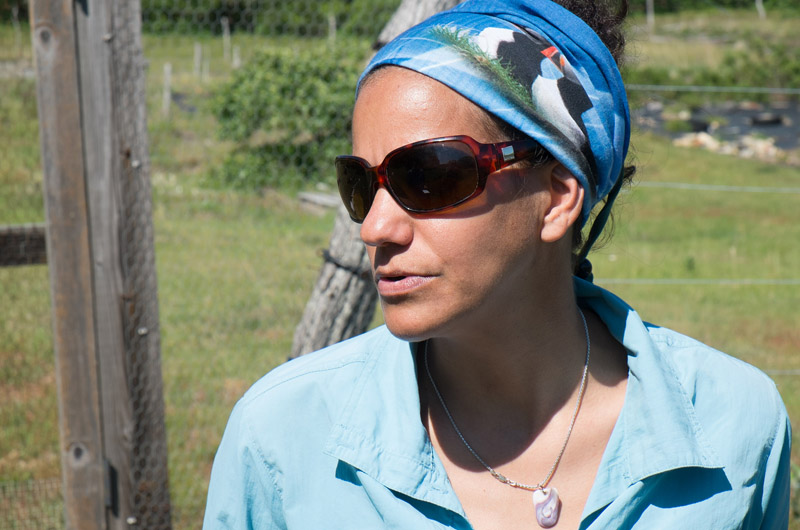Carefully lifting up a panel of plywood near Oyster Pond in Edgartown on Monday, Liz Baldwin uncovered a rare sight: a black racer, the Island’s largest and least common snake species. It was her first encounter with the species, which has been in decline here since the 1970s.
Ms. Baldwin monitors about 40 sites around the Island — in meadows, farms and backyards — for BiodiversityWorks, a research center in Vineyard Haven. She has found mostly garter snakes this year but with a growing network of sites, she hopes to collect data on all seven of the Island’s snake species.
The monitoring program began last year with funding from the Edey Foundation, with a focus on black racers. After collecting information on recent sightings last year, BiodiversityWorks placed several wooden boards at strategic spots around the Island.
Island naturalist Gus Ben David, who is also involved in the monitoring efforts, remembers when black racers were common on the Vineyard. When he was 12, he caught one that measured six feet three inches, which he said is still a record for the Island. But he can’t remember the last time he saw one. Recent sightings are concentrated along the south shore, where there are fewer roads and more habitat.
Black racers feed on mice, insects and other small animals and typically grow to around four feet. Adults are black with smooth scales and a light-colored belly. They move quickly, often chasing down their prey and swallowing it whole.
None of the seven snake species here are venomous, but the black racer often evokes fear with its size and aggressiveness. Most snakes will simply slither away when approached, Mr. Ben David said, but a black racer will sometimes defend its territory, coiling up and vibrating the tip of its tail.
“All snakes can vibrate their tails at a rapid, incredible rate,” he said. And when a snake happens to be lying in dry leaves or grass, the vibration can sound like a rattle. People often mistake milk snakes, a medium-sized species with red, black and yellow bands, for rattlesnakes, which do not live on the Vineyard.
Most of the information collected on Island snakes in the past does not include specific dates and locations, said Ms. Baldwin. “That’s why that baseline data is so important. We have it anecdotally but not quantitatively.”
Ms. Baldwin, along with BiodiversityWorks director Luanne Johnson, spoke Wednesday at the Chilmark Library to help raise awareness of Island snakes and expand the monitoring network.
About 30 people attended, sharing stories and adding to the growing body of knowledge.
BiodiversityWorks is discovering that many people maintain their own wooden snake boards at home, which can be added to the Islandwide network. “We just don’t know where all of them are,” Ms. Johnson said. The wooden boards provide warmth, food and protection for the snakes, which are unable to regulate their own body temperature.
BiodiversityWorks intern Alison Banks will continue checking the boards and taking measurements this summer. Eventually the group hopes to capture a black racer, implant a transmitter and follow it to its hibernation site — typically a cellar or other place below the frostline — to learn more about where they spend the winters. Ms. Johnson has been talking with plumbers and electricians for leads.
One management option for the future, she said, is to educate the owners of properties where black racers hibernate and encourage them to protect the sites.
Snakes have inhabited the Island since before it was an Island, she said, explaining how they got here, along with turtles, moles and other animals that do not cross salt water. Black racers are especially important to the local ecosystem, she said, since they could potentially help control the white-footed mouse population, the primary source of Lyme disease.
Mr. Ben David said the decline in black racers on the Island is due to many factors, including habitat loss, traffic, and increased predation by skunks, raccoons and other small mammals. He noted that skunks were absent on the Vineyard until the 1960s.
“We are trying to get a handle to see where these populations are,” he said of the black racer. “Perhaps we can do something that is advantageous for them.”
To report a recent snake sighting, contact BiodiversityWorks at info@biodiversityworksmv.org.








Comments (8)
Comments
Comment policy »